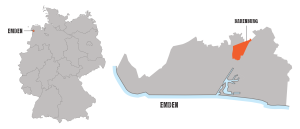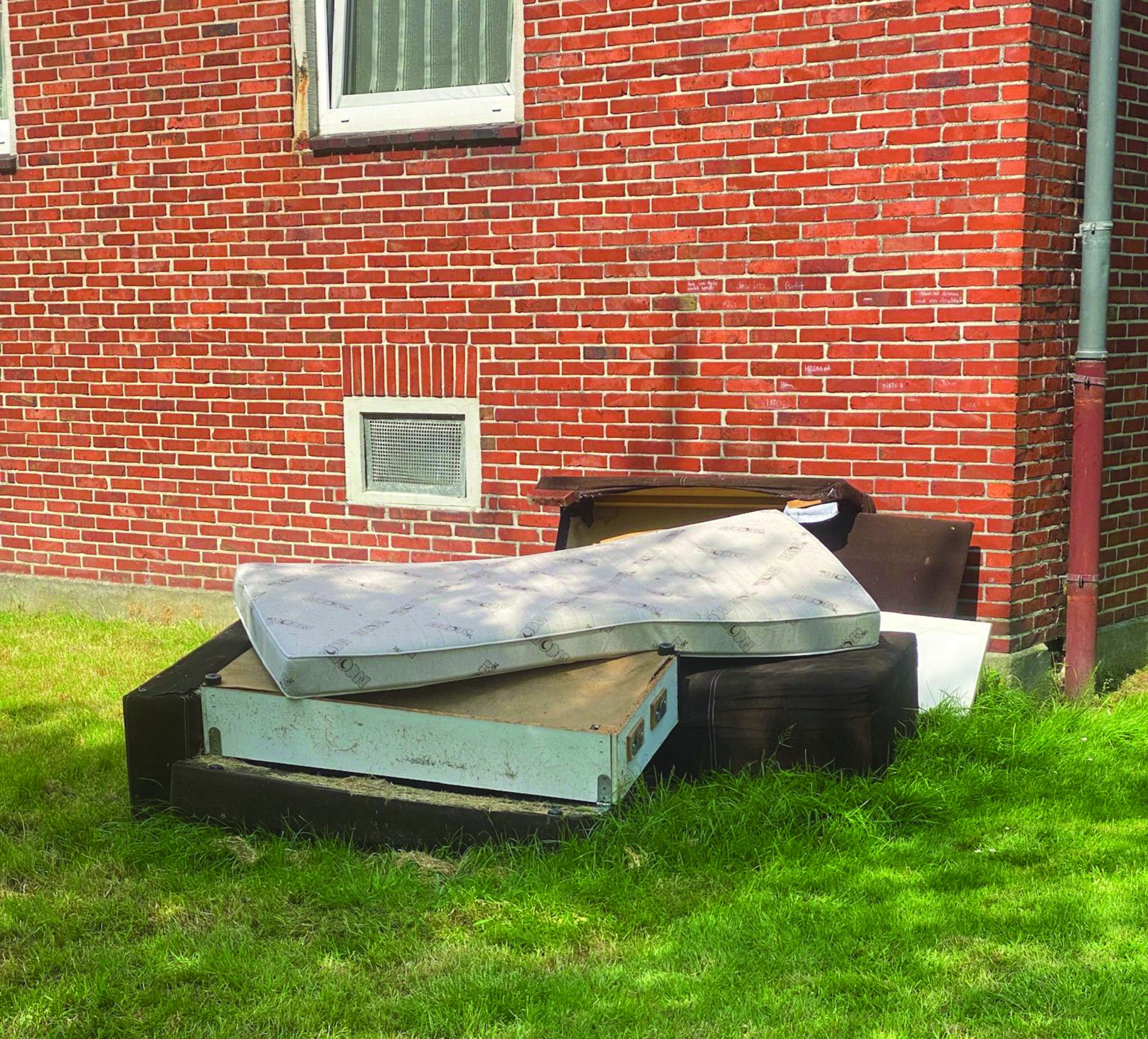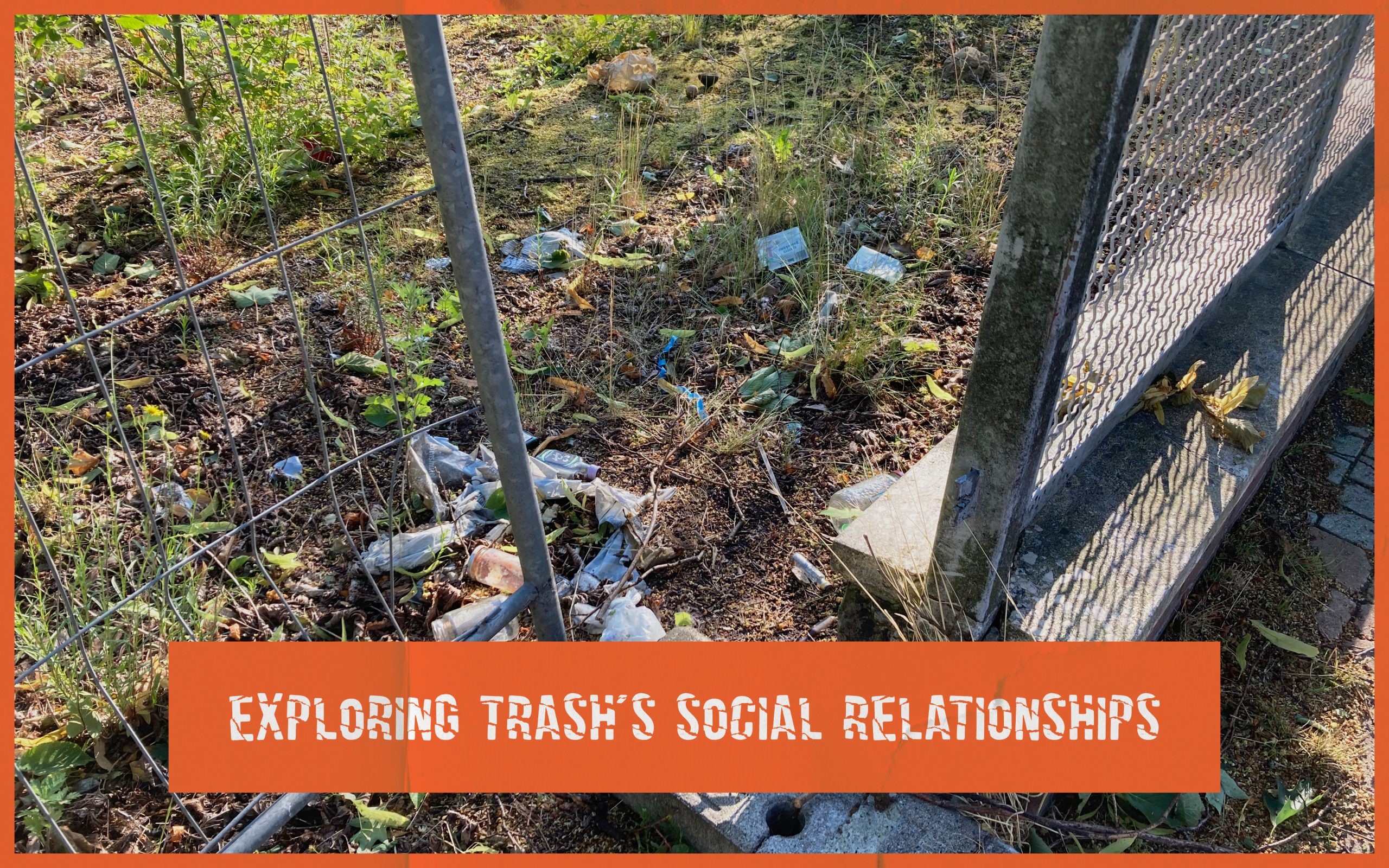▒▒▒▒▒▒▒▒▒▒▒▒▒▒▒▒▒▒▒▒▒▒▒▒▒▒▒▒▒▒▒▒▒▒▒▒▒ This issue was prepared by Jakob Feldmann, Lennart Stanze, and Marcus Garrison Manualpillai. It was designed and curated by Santiago Orrego. ▒▒▒▒▒▒▒▒▒▒▒▒▒▒▒▒▒▒▒▒▒▒▒▒▒▒
Cite this article: Feldmann, J., Stanze, L., and Manualpillai, MG. 2024. “Trashure Hunting.” Tarde 7 (Sep – Oct). DOI: 10.17605/OSF.IO/92YHX
This is a particular number of this project. It is the first publication of Tarde’s educational segment. This initiative aims to involve graduate and undergraduate students in producing tiny ethnographic field devices to explore and reflect on urban life’s seemingly irrelevant and taken-for-granted aspects. In this edition, we will delve into a small community, Barenburg, by focusing on how garbage shapes the daily lives of its inhabitants.
Barenburg is the second-biggest district of Emden, a city located in Lower Saxony, northwest Germany. According to the latest census, 7279 people lived in the zone in 2017, representing 14% of the city’s population. The district has faced a historical issue of social segregation, denoted by a lack of urban and economic development, insufficient housing, and social welfare. Although some of those problems have already been addressed through different programs by local and federal governments, the neighborhood still carries the stigma of underdevelopment, exclusion, and marginality. Its relationship with trash makes this situation more complex.

Spotting trash around
As part of a training activity on urban mapping, we conducted a short ethnographic exercise with a solid social work perspective. The exercise involved going twice to Barenburg and studying how trash impacts the neighborhood’s social structures. Besides participant observation, we interviewed some residents and documented our exploration by taking pictures and tracking our paths using digital methods to later design some cartographies or treashure maps. During our first visit, we spotted a lot of trash all around the streets. However, four weeks later, the situation had considerably improved once we went back.

This “Trashure Map” shows an observation activity we conducted on the morning of Tuesday, the 16th of April 2024. The goal was to explore a part of the neighborhood and document the garbage we saw on the street and private properties. We found several piles and many kinds of trash and pollution levels, as seen in the related pictures. When we returned a few weeks later, much of the garbage had been removed, but other things had popped up in different places. Click on the image to expand it.
To understand this better, we interviewed Heidemarie Heyer, a social worker who has been active in the area since 2020, supporting residents in improving their community. The first thing Heyer did was to put it all in perspective. Although there is an issue with garbage management in the district, it is a common phenomenon that is also happening in other sectors and cities. She recognizes local government and inhabitants’ efforts to address waste better, like structuring a more functional trash-collecting schedule, and, at the same time, she acknowledges some challenges Barenburg must approach collectively and individually to improve its relationship with trash.
Waste management in Barenburg is a complex scenario due to the conjunction of several elements concatenated in a chain reaction. Most of the houses in the district are multifamily properties or small buildings with several tenants and, sometimes, different ways to dispose of their waste and take care of their trash cans before and after garbage collection. For example, we have identified improper waste sorting, which is a situation that causes garbage not to be picked up. Since nobody has taken their trash, some residents dispose of it in illegal and improvised spots in different neighborhood areas. Abandoned trash is usually prone to being affected by wind and rain, causing its dispersion throughout the region.
Dispersed garbage is not just an aesthetic issue. It may contribute to the proliferation of diseases, attract rodents, and modify the eating habits of local fauna such as crows and ravens. Additionally, based on our conversations with people from the area, inadequate waste management affects residents’ well-being, causing frustration and increasing the district’s stigmatization. However, we identified no odor from illegal trash pits or any conflict among neighbors regarding this topic.


Trash flash
In response to the waste management situation, the city has addressed this issue through the Müll-AG (Waste Working Group), part of the Soziale Stadt (Social City) program, a federal initiative for urban development support. Proposing a collaborative environment between community workers and Barenburg’s residents, the Müll-AG has been closely working with locals to identify their needs regarding waste management and respond to illegal dumping. Moreover, weekly clean-up actions made by neighbors and supported by the Barenburg network foster community spirit and encourage volunteer work.
As social work students, beyond identifying the problem happening in this neighborhood, we also wanted to come up with possible imaginative solutions that would involve the community in a collective effort to learn together by proposing an educational game on how to sort and dispose of trash. An English version of this game is already available here.

An overview of the game. Click on the image to expand it.

